40 Common Garden Shrubs You Must Know
1. Lorpetalum chinense, Hamamelidaceae
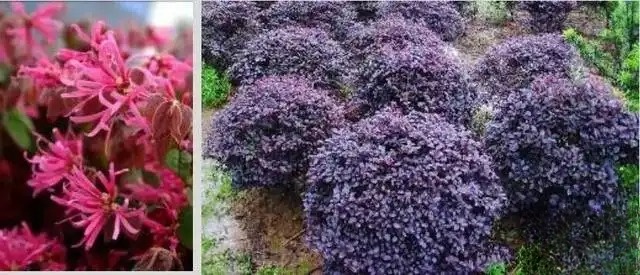
Morphological characteristics
Morphological characteristics:
Evergreen shrub. Many branches, not upright, semi-climbing, with thorns or no thorns. Leaves are opposite, with serrated edges. Long flowering period, from mid-April to mid-December, with blooms from May to September. The flowers are small, high-footed saucer-shaped, blue-purple, quiet and beautiful, and deeply loved. The fruit is round or nearly ovate, with a pointed beak at the top. Fruits are produced throughout the year, and the peak maturity period is from June to November.
Origin Distribution
It is native to tropical Central and South America, from the West Indies, Mexico to Brazil, and has been introduced to many tropical regions around the world. It is widely cultivated in southern China.
Growth habit
It likes warm and humid climate, but has low cold resistance. When it encounters long-term low temperature of 5~6℃ or short-term frost, the plant will be damaged by cold. In the vast areas of southern China, northern China, central China and northern China, it is only suitable for potted plants, greenhouses or indoors to protect against cold during the winter, and the room temperature should not be lower than 8℃. It likes light and can tolerate semi-shade. It has strong adaptability to soil, and sandy soil, heavy clay soil, acidic soil or calcareous soil are all suitable. It likes fertilizer and grows poorly in barren land. It is resistant to water and humidity, but not drought. It is suitable to apply sufficient basal fertilizer for potted plants or ground planting, and apply compound fertilizer 1~2 times every year during the vigorous growth period. It has strong sprouting ability. According to the ornamental requirements, the branches can be twisted, or intensive pruning can be carried out in spring every year to facilitate the sprouting of new branches that year and avoid loose and messy crowns. The old stems can also be cut off to cultivate pile landscape.
3. Pittosporum tobira (Thunb.) Ait.
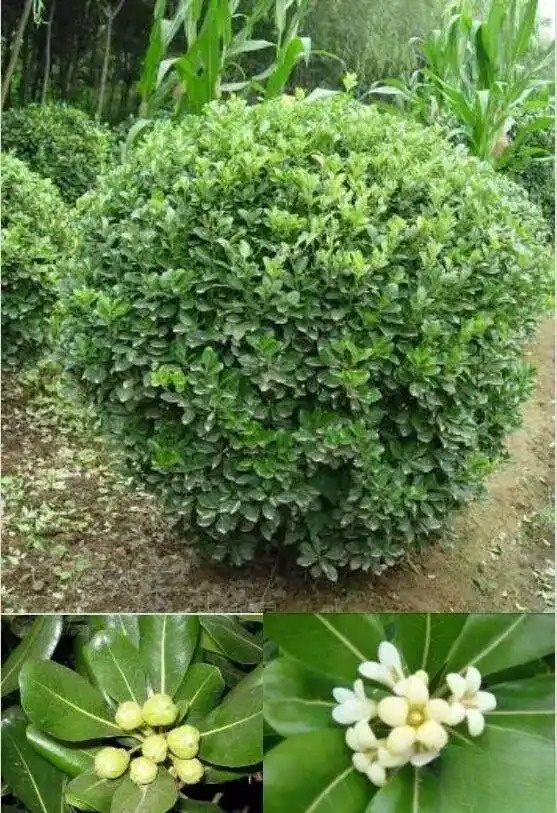
Morphological characteristics
Evergreen shrub or small tree, up to 3 meters high. The branches and leaves are densely grown, and the crown is sparse. Most of the leaves are clustered at the top of the branches, and the simple leaves are alternate, sometimes in whorled shape at the top of the branches. They are thick, leathery, narrowly obovate, 5-12 cm long, 1-4 cm wide, entire, obtuse or concave at the top, cuneate at the base, and the margins are often slightly curled outwards, with petioles, bright green on the surface, and new leaves are yellow and tender. The cymes are terminal; the flowers are white or yellow-green, fragrant, and the pedicels are 0.8-1.5 cm long; there are 5 sepals, petals, and stamens; the ovary is superior and densely covered with short soft hairs. The capsule is nearly spherical, angular, up to 1.5 cm long, initially green, then yellow, and split into 3 lobes when mature, and the fruit lobes are woody; the seeds are bright red and mucus. The flowering period is May, and the fruit ripening period is September-October.
Growth habit
Pittosporum is a subtropical tree species, so it likes warm and humid marine climate, likes light, and is relatively shade-tolerant. It is not very demanding on soil and can adapt to clay, sandy soil, alkaline soil and neutral soil. It has strong germination ability and is resistant to pruning.
Garden use
In warm climates, this species is an ideal flowerbed landscaping tree or gardening tree species, especially suitable for planting in coastal areas. It is often used as a foundation plant for houses and hedges. In the north, it is grown in pots for viewing and overwintering in greenhouses.
4. African Jasmine Fagraea ceilanica
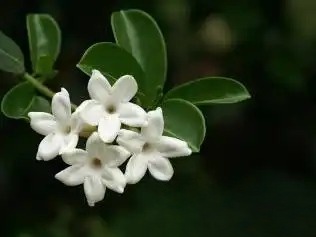
Morphological characteristics
African jasmine is an evergreen shrub or small tree that can grow to 5 to 12 meters in the garden, often epiphytic; leaves are opposite, grassy, oblong, elliptical to obovate, with gradually pointed tips; dark green on the upper side, yellow-green on the back. The inflorescence is upright and terminal, with 1 to 3 flowers, a very short peduncle, a white corolla, funnel-shaped, fragrant, and the entire corolla is in the shape of a small trumpet.
Ecological habits
African jasmine likes warmth and sunshine, but requires avoiding strong direct sunlight in summer; it likes an environment with high air humidity and good ventilation, and cannot tolerate cold, dry freezing and drastic temperature drops; it grows best in loose, fertile, well-drained loam; it has strong germination and tillering ability, and is particularly resistant to repeated pruning. The flowering period is May, and the fruiting period is October to December.
5. Ligustrum lucidum
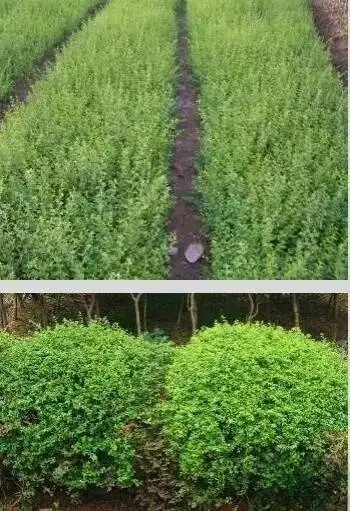
Morphological characteristics
An evergreen shrub with smooth grey bark. Branches spread out and glabrous. Leaves are leathery, broadly ovate to ovate-lanceolate. Inflorescences are terminal, with white flowers and oblong, blue-black drupes. Flowering period is June to July.
Ecological habits
Ligustrum lucidum is cold-resistant and water-resistant, prefers warm and humid climate, prefers light and tolerates shade. It is a deep-rooted tree species with well-developed fibrous roots, fast growth, strong germination ability, and tolerance to pruning, but not to barrenness. It has strong resistance to air pollution, sulfur dioxide, chlorine, hydrogen fluoride and lead vapor, and can tolerate high dust and smoke pollution. It is not strict with soil requirements, and is preferably cultivated in sandy loam or clay loam. It can also grow in red and yellow loam. It is not strict with climate requirements, and can tolerate low temperatures of -12°C, but is suitable for planting in moist, leeward, sunny places.
Garden Application
Ligustrum lucidum is a common ornamental tree species in gardens. It can be planted alone or in groups in the courtyard, or as a street tree. Because of its strong adaptability, fast growth and tolerance to pruning, it is also used as a hedge. Generally, it takes 3 to 4 years to take shape and achieve an isolation effect.
6. Ficus benjamina
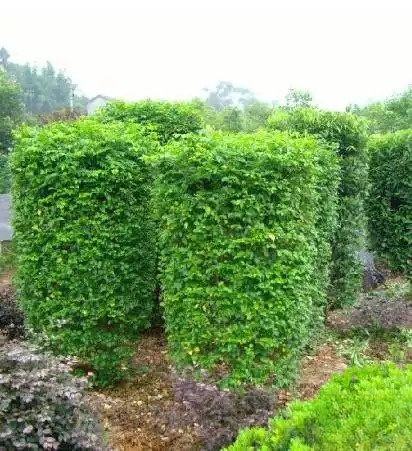
Distribution area
, Malaysia and India
Morphological characteristics
Evergreen shrub or small tree. Plant characteristics: The plant can reach tens of meters, with an upright, gray trunk and a conical crown. The branches are easy to grow roots, the twigs are drooping, and the whole plant is smooth. The leaves are elliptical, alternate, with wavy edges, pointed tips, and rounded or blunt bases. It is mainly for viewing and is an ornamental plant. Flower characteristics: The leaves are more obvious from late February to late April. It is a positive plant, and the whole day is ideal. It grows more vigorously with sufficient sunshine. The best soil for cultivation is loam or sandy loam, and drainage needs to be good. The suitable temperature for growth is high temperature and humidity, and it is drought and humidity resistant. It needs warmth and shelter in winter. The suitable temperature for growth is about 22 to 30 degrees Celsius. Prevent cold damage below 10 degrees.
Garden use
Suitable for potted plants, street trees or shade trees, or as decorative trees.
Reproduction method
The propagation method is cutting, high pressure or grafting, and the suitable period is spring to autumn.
7. Rhododendron simsii Planch, Ericaceae, Rhododendron genus
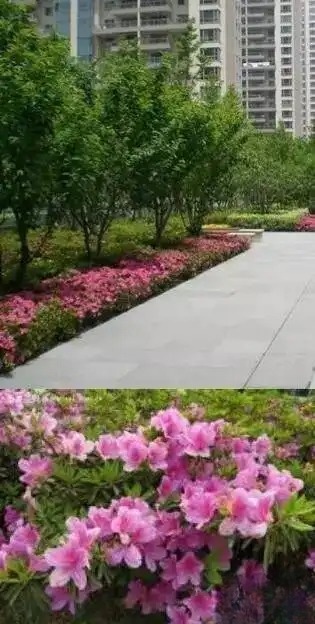
Morphological characteristics
Also known as red azalea, azalea, rhododendron, deciduous shrub, about 2 meters high; branches, bracts, pedicels and flowers are all covered with brown flat rough hairs. The leaves are papery, ovate-elliptical, the corolla is bright red or dark red, broad funnel-shaped, 4-5 cm long, flowering period is April-May, and the fruit ripening period is October. It is an indicator plant for acidic soil.
Growth habit
Azalea prefers a cool, moist, ventilated semi-shady environment. It is afraid of both extreme heat and severe cold. The optimum temperature for growth is 12℃ to 25℃. When the temperature exceeds 35℃ in summer, new shoots and leaves grow slowly and are in a semi-dormant state. In summer, it is necessary to protect against the sun and shade, and in winter, it is necessary to keep warm and prevent cold. Avoid exposure to the sun. It is suitable to grow under scattered light with low light intensity. If the light is too strong, the tender leaves are easily burned, and the new and old leaves are burnt. In severe cases, the plant will die. In winter, measures should be taken to prevent cold when cultivating azalea in the open field to ensure its safe wintering. Among the ornamental azaleas, the western azalea has the weakest cold resistance, and it is easy to suffer frost damage when the temperature drops below 0℃.
Garden use
Rhododendron is very beautiful. The tubular flowers are in many colors, such as deep red, light red, rose, purple, white, etc. When the azalea blooms in spring, the whole mountain is bright, like colorful clouds around the forest. It is often used as a garden shrub. It blooms for a long time and has bright colors. It is an excellent flowering shrub.
8. Belgian Rhododendron hybrida
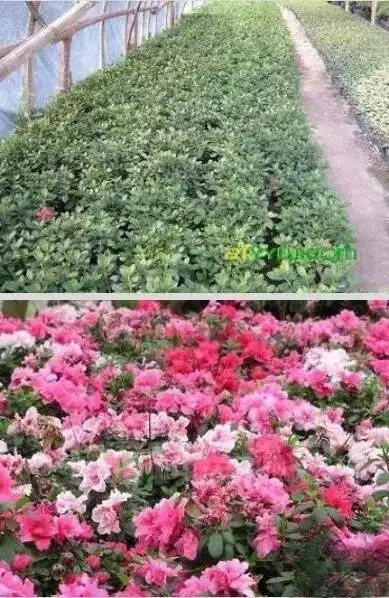
Morphological characteristics
Evergreen shrub with short stature. Branches and leaves are sparsely covered with soft hairs. Leaves are alternate, oval, and entire. Flowers are terminal, with broad funnel-shaped corollas, semi-double, and rose-red, aqua-red, pink, or other colors. There are many varieties. The flowering period is mainly in winter and spring.
It likes warm, humid, cool, ventilated and semi-shaded environment. Avoid direct sunlight in summer, shade it, spray water frequently and maintain air humidity. Reduce shading after September to October to facilitate flower bud differentiation.
The air humidity should be between 70% and 90%. Watering should be carried out during the growth and development period. Maintaining a high air humidity is beneficial to the growth and flowering of Belgian azalea.
9. Distylium racemosum Sieb. et Zucc. Hamamelidaceae Distylium racemosum Sieb. et Zucc.
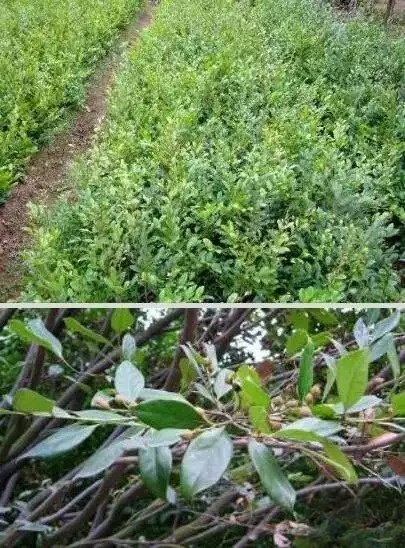
Morphological characteristics
An evergreen small tree or shrub, up to 5 meters tall, with a spreading crown. The young branches have star-shaped scales, and the terminal buds are crooked and dark brown. The leaves are single and alternate, thick and leathery, smooth, elliptical or obovate, with obtuse apex, neither broadly cuneate, smooth and hairless, with slightly raised veins on the back and entire margins. Flowers bloom in April-May, racemes, and needle-shaped bracts.
Growth habit
It has few diseases and pests, and is resistant to low temperature and high heat, as well as cold and waterlogging, and is easy to shape.
Garden use
Because of its resistance to pruning, mosquito nettle is often used in gardens as a shaped hedge, planted in the courtyard for viewing, or planted in the corners of the wall or next to stones to create a good landscape effect.
10. Schefflera octophylla (Lour.) Harms
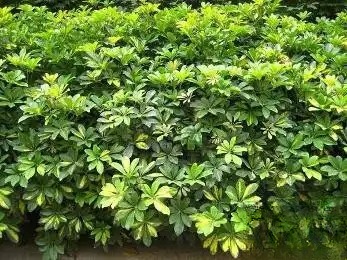
Morphological characteristics
It is an evergreen large tree or shrub, with a plant height of 30 to 80 cm under cultivation conditions, and can reach 40 meters in its native habitat. It has many branches and the branches are dense. It has palmate compound leaves, with 5 to 9 leaflets, which are elliptical or ovate-elliptical, 9 to 17 cm long and 3 to 5 cm wide, with long tips at the ends. The leaves are leathery, dark green and shiny. The flowers are small, mostly white, fragrant, and bloom in winter and spring; the berries are spherical and fruit from December to January of the following year.
Growth habit
Schefflera prefers semi-shade, and the optimum growth temperature is 15-25℃. The minimum temperature in winter should not be lower than 5℃, otherwise it will cause the leaves to fall off. New leaves will appear in the spring of the following year. It grows well in an environment with high air humidity and sufficient soil moisture, but it has a strong adaptability to the dry climate in the north. Be careful not to lack water, otherwise it will cause a large number of leaves to fall off. Water should be properly controlled under low temperature conditions in winter.
Garden use
The plant is plump and beautiful, with strong adaptability, and is an excellent potted plant. It is suitable for arranging living rooms, study rooms and bedrooms. It can also be placed in the shade of the courtyard and on the balcony of the building for viewing in spring, summer and autumn. It can also be planted alone in the courtyard. It is a nectar plant in the south in winter. The leaves and bark can be used as medicine.
11. Ilex crenata cv. Convexa Makino
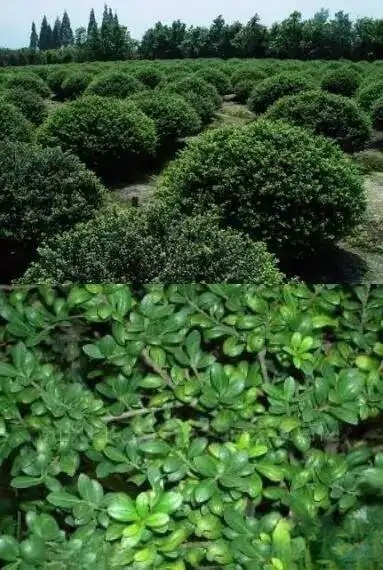
Morphological characteristics
An evergreen shrub, a variant of Ilex obtuse, with many branches, gray hairs on the twigs, small and dense leaves, convex leaf surface, thick leathery, elliptical to obovate, white flowers, and spherical, black fruit.
Growth habits: shade-tolerant.
Garden use
It can be used as garden color blocks, bonsai, garden ornamental plantings, solitary plantings, cluster plantings, patch plantings, and block plantings. It can also be used as hedges.
12. Nandina domestica Thunb.
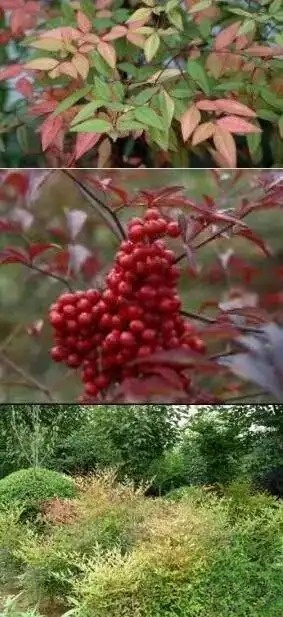
Morphological characteristics
Plant height is about 2m. Erect, few branches. Old stems are light brown, young branches are red. Leaves are opposite, small, white flowers; berries are spherical, bright red, and persist until February of the following year. Evergreen shrub, about 200cm tall. Stems are erect, few branches, and young branches are often red. Leaves are alternate. Flowering period is May to June, and fruit ripening period is October to January of the following year.
Growth habit
It is an evergreen shrub. It is an indicator plant for calcareous soil. It prefers a warm, humid and well-ventilated semi-shady environment. It is relatively cold-resistant. It can tolerate slightly alkaline soil. It prefers a warm and humid climate, and is not cold-resistant or drought-resistant. It likes light and tolerates shade. Its leaves turn red under strong light.
Garden use
Nandina domestica has a beautiful and lush green appearance. It has many red fruits that are round and smooth. Its leaves change from red to green with the seasons. It is a commonly used colorful shrub and is widely used in gardens.
13. Aglaia odorata Lour. Aglaia odorata Lour, Meliaceae
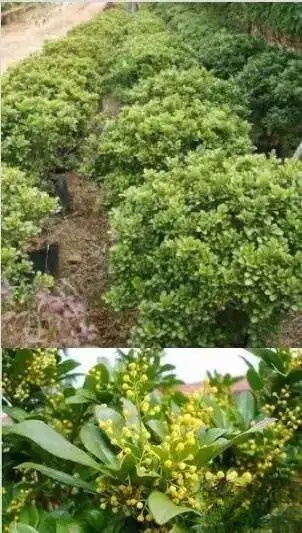
Morphological characteristics
Evergreen shrub. Odd-pinnate compound leaves, 3-5 leaflets, leathery and shiny. Conical inflorescences grow in the axils of new shoots, with small, yellow, fragrant flowers, blooming in summer. The commonly cultivated variant of Milano has smaller leaves than Milano, dense flowers, can bloom continuously, and has a longer flowering period.
Region of origin
It is native to southern Asia and is distributed in South China, Vietnam, India, Thailand, Malaysia, etc.
Growth habit
It likes warmth and avoids severe cold. It likes light and avoids strong direct sunlight. It is slightly shade-tolerant and prefers fertile, humus-rich, well-drained loam. Repot once every 1 to 2 years and fertilize once every 1 to 2 weeks during the growing period. Move it indoors in winter to a place with direct sunlight, and the overwintering temperature should be above 10°C.
14. Nephrolepis cordifolia (L.) Presl Nephrolepis cordifolia
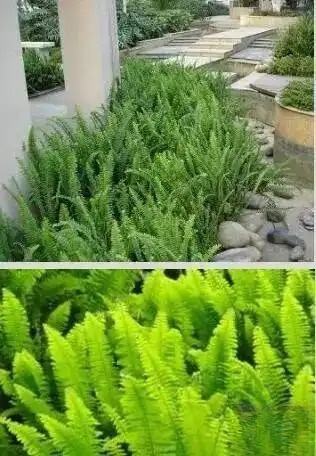
Morphological characteristics
Nephrolepis is a medium-sized terrestrial or epiphytic fern, with a plant height of 30-60 cm. It has rhizomes underground, including short and upright stems, creeping stolons and spherical tubers. It is clustered lanceolate, with leaves 30-70 cm long and 3-5 cm wide, and pinnately compound leaves with 40-80 pairs of pinnae. The newly born small compound leaves are fist-shaped and have silvery white hairs, which disappear after unfolding. The mature leaves are leathery and smooth. The main vein of the pinnate compound leaves is obvious and centered, and the lateral veins extend symmetrically to both sides. The spore sori grows at the top of the upper lateral veins of the lateral veins of the leaflets at all levels, and the sori are kidney-shaped.
Growth habit
The ecological habit of Nephrolepis is that it likes warmth and humidity and cannot tolerate strong light. It is suitable for growing in neutral or slightly acidic loose soil rich in humus and good permeability. It likes warmth, but has a strong ability to adapt to temperature and can grow well from 10-35. It likes moisture and requires high soil and air humidity.
Garden Application
Nephrolepis is an ornamental fern widely used at home and abroad. It is easy to cultivate, grows robustly, and can achieve good ornamental effects with rough management. It has an upright plant shape, deep and peculiar compound leaves, dark green leaves that are evergreen all year round, and a natural and elegant shape. It has been widely used in landscaping in recent years.
15. Photinia serrulata, Rosaceae
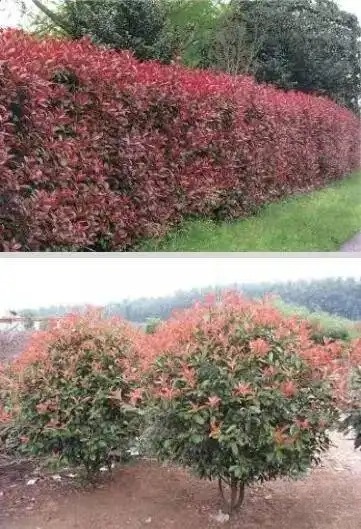
Morphological characteristics
Evergreen shrub, 4-6 meters tall, leathery leaves, oblong to obovate-lanceolate, with a tail tip, new leaves in spring are bright red, turn green in summer, and turn red in autumn, winter, and spring. The color becomes darker in heavy frost and better in low temperatures. The leaves are waxy with irregular small serrations around them, and the leaf stalks at the top branches are bright red all year round.
Growth habit
Photinia fraseri has strong adaptability, tolerance to low temperature, tolerance to poor soil, and certain tolerance to salinity and drought. It likes strong light and has strong shade tolerance, but the color is brighter under direct light.
Garden Application
In spring and autumn, the new shoots and young leaves of Photinia fraseri are bright red, with long-lasting colors and full of vitality. In the hot summer, the leaves turn bright green, bringing a refreshing and cool feeling in the hot summer. When used as a hedge, it looks like a lying fire dragon; when trimmed and landscaped, it can have various shapes, and the branches and leaves are always red and pleasing to the eye, with beautiful landscape effects.
16. Lacy tree philodendron
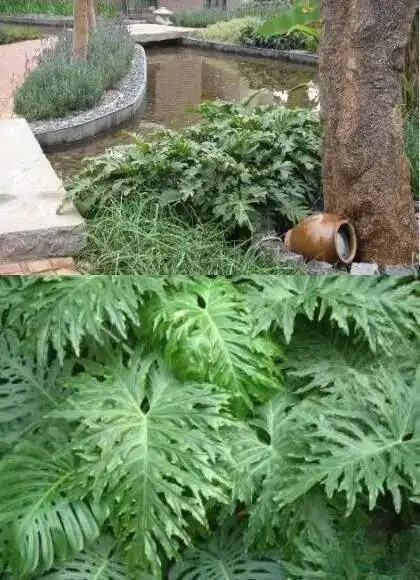
Morphological characteristics
Spring Feather, formerly known as Feather-cracked Philodendron (Feather-cracked Philodendron), is a perennial herb. The plant can reach a height of 1 meter, with a thick upright stem and a diameter of 10 centimeters. There are obvious leaf scars and wire-like aerial roots on the stem. The leaves extend in all directions from the top of the stem, with a petiole about 40 to 50 centimeters long. The leaves are bright, rich, shiny, ovate, and heart-shaped, and leathery.
Ecological habits
It is a perennial evergreen herb. It is relatively shade-tolerant. It is one of the most cold-resistant species in the genus. The optimum temperature for growth is 18-25℃. It can tolerate a low temperature of 2℃ in winter, but it is better to keep it above 5℃. It requires sandy soil.
Garden Application
Spring feather has peculiar leaves and is very shade-tolerant. It is often used as an indoor potted plant, but because the temperature in Kunming is relatively high and the outdoor temperature can meet its growth, it is also often used as a garden shrub. Its leaves are thick and large, with dark green color, and are most suitable as a shrub background layer.
14. Fatsia japonica (Thunb) Decne et Planch Araliaceae Fatsia japonica (Thunb)
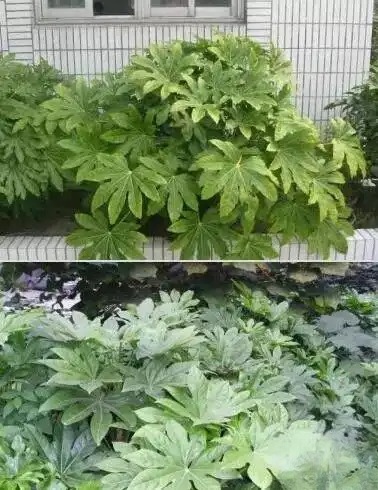
Morphological characteristics
Evergreen shrub. Leaves are large, palmate, 5-7 deeply lobed, thick, shiny, with serrated or wavy edges, green or sometimes golden yellow edges, long petioles, thick at base. Umbels form terminal panicles, white flowers. Flowering period is October-November. Berries are spherical, purple-black, covered with white powder. Mature in May.
Ecological habits
This flower is native to Japan and Taiwan. It likes warm and humid environment, is shade-tolerant, and relatively cold-resistant. It likes moisture and is afraid of drought. It is suitable for growing in fertile, loose and well-drained soil. The best place for ground planting of the golden octagonal plate is in semi-shaded and moist places such as forest edges and ditches.
Garden Application
The plant is evergreen in the Yangtze River Basin and does not suffer from frost damage in winter. It has a unique leaf shape, magnificent posture, dark green leaf color, and high coverage rate. It is an excellent evergreen foliage ground cover plant. It is extremely shade-tolerant and suitable for 3-5 clusters, planted under forests, roadsides, and lawn corners.
15. Hibiscus rosa-sinensis
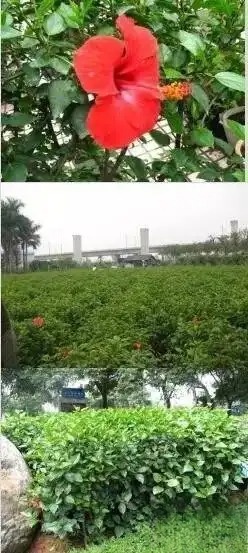
Morphological characteristics
Evergreen large shrub or small tree. Stem is upright and branched, can reach 2-4 meters in height without pruning. Leaves are alternate, broadly ovate to narrowly ovate. Flowers are large, with drooping or upright petals, single or double petals; single petals are funnel-shaped, double petals are not funnel-shaped, and are red, yellow, pink, white, etc. They bloom all year round, with the most blooming in summer and autumn.
Ecological habits
It likes warm and humid climate, is not resistant to cold and frost, is not shade-tolerant, and should grow in sunny and ventilated places. It is not strict on soil, but grows best in fertile, loose, slightly acidic soil, and the winter temperature should not be lower than 5°C.
Garden Application
The bright and eye-catching flowers of hibiscus bloom in the morning and wither in the evening. They are colorful and are often planted as shrubs in the south, scattered by ponds, in front of pavilions, along roads and along walls.
16. Bougainvillea (Bougainvillea)
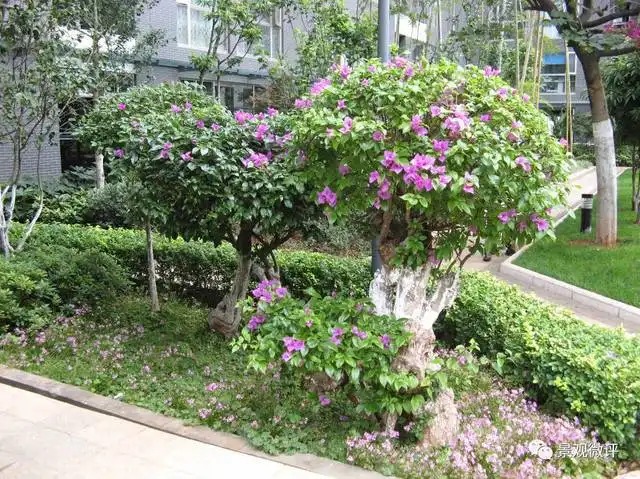
Morphological characteristics
Deciduous shrub, plant height 0.5-1.5M. Branches and leaves densely covered with soft hairs, with branch thorns. Single leaves, alternate, ovate or ovate-elliptical. Flowers are mostly 3 at the top, each flower has a large leaf-like bract, the bract is bright red.
Ecological habits
It likes warm and humid climate, is not cold-resistant, can safely overwinter at temperatures above 3°C, and can bloom at temperatures above 15°C. It likes plenty of light.
Garden Application
It is often planted in clumps in courtyards, beside houses, on fences, etc.
17. Bougainvillaca X buttiana Holtt.et Standl. Bougainvillaca genus, Nyctaginaceae
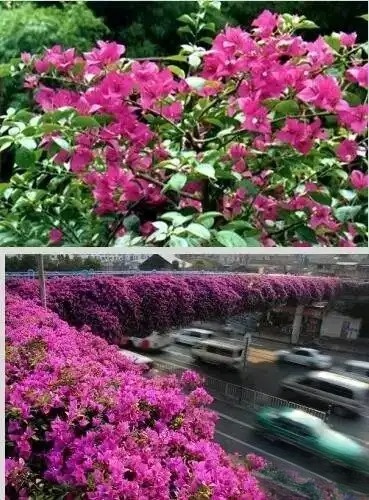
Morphological characteristics
It is an evergreen climbing shrub. The branches and leaves are glabrous or nearly glabrous; the branches have thorns and the vines are mostly drooping. The leaves are simple, alternate, ovate or ovate-lanceolate, and have entire margins. The flowers are terminal, often clustered in 3 leaves in leaf-like bracts, which are triangular, purple-red, and are the main ornamental parts.
Ecological habits
It likes warm and humid climate, is not cold-resistant, can safely overwinter at above 3℃, and can bloom at above 15℃. It likes sufficient sunlight. It is not demanding on soil, grows well in well-drained, mineral-rich heavy loam, is resistant to barrenness, alkali, drought, avoids waterlogging, and tolerates pruning.
Garden use
The triangular bracts are large, colorful and long-lasting, suitable for garden planting or potted viewing. It can also be used as bonsai, hedges and trimming.
18. Cuphea ignea (syn. C. platycentra) Lythraceae Cuphea ignea
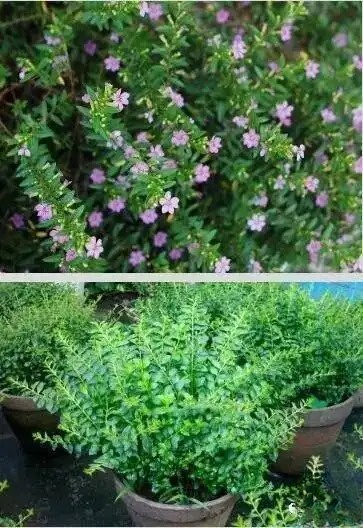
Morphological characteristics
Cigar flower is named after its flower shape which resembles a "cigar". The plant height is about 30-40 cm. But it can bloom when it is about 10 cm in pot. The leaves are opposite, lanceolate, papery, emerald green, and entire. The flowers are axillary, petalless, and consist of bright red tubular calyx. The calyx tube mouth is purple and white. The shape is unique and very popular. Each calyx is very durable. Flowers can be seen almost all year round, but the peak is in summer.
Breeding and cultivation
Use sowing and cutting method, spring is the sowing cycle, the suitable temperature for seed germination is 15--22℃. After sowing, cover with a shallow layer of fine soil, keep cool and moist, and it will germinate in about 3--4 weeks. Cuttings grow fast, spring and autumn are the best seasons, cut mid-mature branches or terminal buds, each section is about 5-7 cm, and cut into the culture soil prepared by perlite, river sand, and peat soil, keep cool and moist, and it will take about 2--3 weeks for roots to grow, and then transplant after the root group is vigorous.
Garden Application
It is often planted as the lowest layer of shrubs in residential areas and park greening, and is suitable for garden beautification and potted plants.
19. Gardenia jasminoides
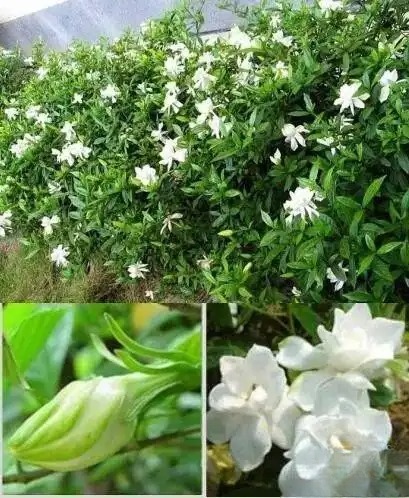
Morphological characteristics
Evergreen shrub. Obovate leaves, leathery, emerald green and shiny. White flowers, very fragrant. Oval berries, yellow or orange. Flowering period is June to August, fruit ripening period is October.
Ecological habits
Gardenia likes warm and humid climates and is not cold-resistant. It likes sunlight but cannot withstand strong sunlight, so it is suitable to live in a slightly shaded place. It is suitable to grow in loose, fertile, well-drained, lightly sticky acidic soil, and is a typical acidic flower. It can be propagated by cuttings, layering, division or sowing.
Garden Application
The flower can be used as a tea spice, and the fruit can reduce inflammation and heat. It is an excellent aromatic flower. The gardenia usually refers to the large-flowered gardenia with double petals for ornamental purposes. The leaves of the gardenia are evergreen all year round, and the flowers are fragrant and elegant. The green leaves and white flowers are particularly beautiful and lovely. It is suitable for placement in front of steps, by the pool and on the roadside. It can also be used as a flower hedge and potted plant for viewing. The flowers can also be used for flower arrangement and wearing decoration.
20. Mahonia fortunei (Lindl.) Fedde
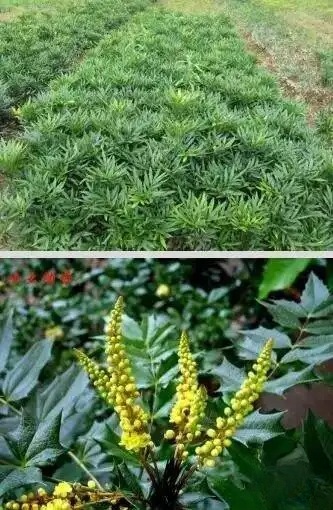
Morphological characteristics
Evergreen shrub, roots and stems are yellow in cross section, leaves are bitter. The leaves are alternate, leathery, lanceolate, with sharp thorn-like teeth on the edges; the stipules are small and in shape. The racemes are upright, the petals are yellow, and the berries are round or oblong, blue-black, with white powder. The flowering period is from July to October.
Ecological habits
Mahonia is a warm temperate plant with strong cold resistance. It is not heat resistant. In high temperatures, not only does it stop growing, but its leaves also dry out. In its native habitat, it grows mostly in shady valleys and under forests. It is a shade plant. It likes well-drained acidic humus soil, is very intolerant of alkali, is relatively drought tolerant, is afraid of waterlogging, and grows poorly in dry air.
Garden Application
The leaves of Mahonia are peculiar, elegant and beautiful. Potted plants can be used for indoor display. Because of its good shade tolerance, it can be grown for a long time under indoor diffuse light conditions. It can also be planted beside the rockery or in the cracks of the rocks in the courtyard, but it is best to have a big tree to provide shade.
21. Camellia sasanqua Theaceae Camellia
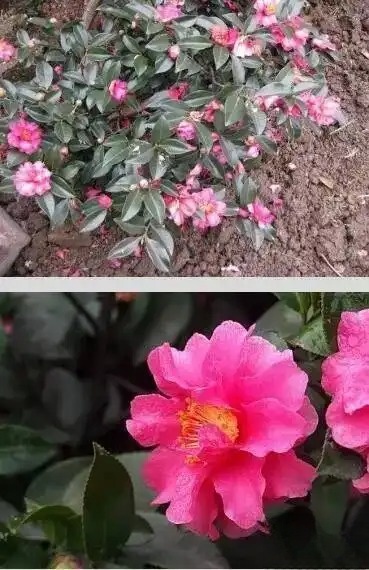
Morphological characteristics
An evergreen shrub or small tree, up to 12 meters tall, with a spherical or oblate crown. The bark is off-white. The young branches are coarsely hairy, and the surface of the bud scales is covered with inverted soft hairs. The leaves are alternate, elliptical to oblong-ovate, with short tips and fine serrations on the edges. They are leathery, glossy on the surface, slightly hairy on the midrib, and inconspicuous on the lateral veins. They are white or red, slightly fragrant. The capsule is spherical and slightly hairy. The flowers are set or semi-double, and the colors include red, white, pink, etc., as well as many strange color variations and red and white borders. The diameter of the camellia flower is 3.5-6 cm, fragrant, and the flowering period is long, from late October to March of the following year. The camellia not only has gorgeous and elegant colors, but also has branches that are mostly spread horizontally, with a plump posture and a beautiful tree shape. The fruit is spherical.
Ecological habits
Camellia sasanqua prefers shade and humidity, and is best suited to half shade and half sun. Strong sunlight will burn its leaves and buds, causing the leaves to curl and fall off. But it also needs proper light to bloom luxuriantly and brightly. Camellia sasanqua prefers warm and humid climates. It is suitable for growing in fertile, loose, well-drained acidic sandy soil. Alkaline soil and clay are not suitable for growing Camellia sasanqua.
Garden Application
There are very few shrubs that bloom in winter in gardens. The flowering period of Camellia sasanqua is from October to April of the following year, which fills this time period, so it is widely used in landscaping.
22. Pyracantha fortuneana (Pyracantha fortuneana, Rosaceae)
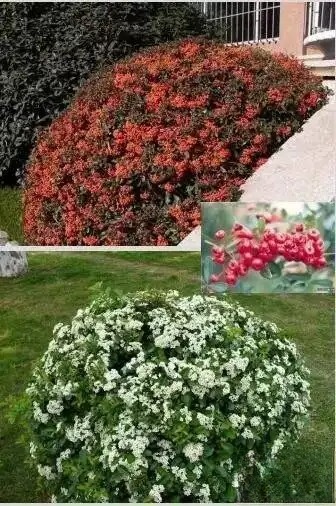
Morphological characteristics
An evergreen shrub with short thorn-like side branches; obovate leaves, 1.6-6 cm long, compound cymes, 10-22 white flowers, 1 cm in diameter; 5 petals, 20 stamens, 1 pistil; flowering period March-April; nearly spherical fruit, 8-10 mm in diameter, spike-shaped, with 10-20 fruits per spike, orange-red to dark red, very popular. The bottom of the fruit begins to turn red in September and can remain so until the Spring Festival. It is an excellent plant for viewing flowers in spring and fruits in winter.
Ecological habits
Pyracantha is a subtropical plant that likes to grow in a warm, humid, well-ventilated, sunny and long-day environment. The most suitable growth temperature is 20-30℃. In addition, Pyracantha is also very cold-resistant. If it is planted in a place where the temperature is higher than 10℃ in winter, the plant will not be dormant, which will affect flowering and fruiting in the next year. Although Pyracantha can tolerate barrenness, it is not very demanding on soil.
Garden Application
Pyracantha has advantages as a hedge because of its strong adaptability, tolerance to pruning, and love of germination. Pyracantha grows better in poor environments, has strong natural resistance to adversity, and has fewer diseases and insect pests. As long as it is pruned diligently, the hedge planted in the same year will be effective in the same year. Pyracantha is also suitable for planting on slope protection, and is also suitable for small and medium-sized pot cultivation, or for planting in clusters or solitary planting on the edge of the grassland in the garden.
23. Rhododendron delavayi Franch Ericaceae Rhododendron
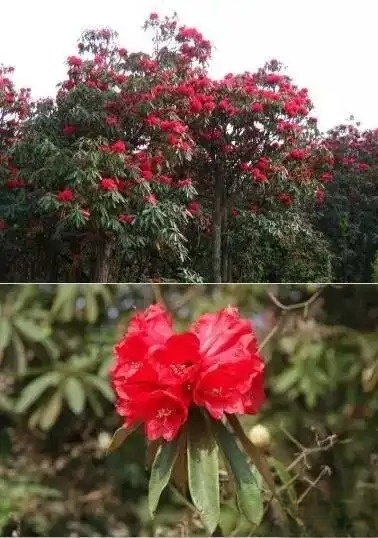
Morphological characteristics
Evergreen shrub to small tree, 3-8 meters high. The bark is brown and peels in irregular flakes. The leaves are leathery and clustered at the top of the branches; the leaves are oblong-lanceolate, with entire wavy edges; the flowers are clustered at the top of the branches, in umbel-like racemes, with 10-20 flowers, hairy, large and beautiful. The corolla is bell-shaped and dark red. The flowering period is April-May, and the fruiting period is September-October.
Ecological habits
It likes a cool and humid climate and hates extreme heat and dryness. It requires a well-ventilated semi-shaded environment. It should be protected from the sun and shaded in summer, and should be kept warm and cold in winter. It should also be noted when watering. Although this species likes moisture, it is not tolerant to waterlogging. Too much water will easily cause root rot. Therefore, the principle of watering is to water when the soil is dry and keep the soil moist.
Garden Application
The flowers of the horsetail flower are very beautiful and are suitable for embellishment planting beside stones, roadsides, lawn edges, etc. The price is relatively expensive, so it is recommended to use it in small quantities.
24. Jasminum nudiflorum
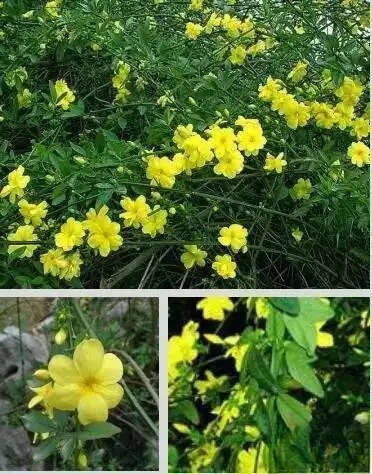
Morphological characteristics
Winter jasmine, also known as golden plum, golden belt, and small yellow flower, is a deciduous shrub of the family Rhinoceros, named because it blooms the earliest among all flowers. Its branches are slender, arched and drooping, and can reach more than 2 meters in length. The side branches are strong, quadrangular, and green. The trifoliate leaves are opposite, 2-3 cm long, and the leaflets are ovate-elliptical, smooth on the surface, and entire. The flowers are solitary in the leaf axils, and the corolla is high-footed cup-shaped, bright yellow, with 6 lobes at the top, or double petals. The flowering period is from March to May and can last for 50 days.
Ecological habits
It likes light, tolerates shade, tolerates cold, and is afraid of waterlogging. It can overwinter in the open field in North China and Yanling. It requires a warm and humid climate, loose, fertile, and well-drained sandy soil. It grows vigorously in acidic soil and grows poorly in alkaline soil. The root germination power is strong. The part of the branch touching the ground is very easy to take root.
Garden Application
The branches of the willow of winter jasmine are drooping, and the flowers bloom before the leaves in late winter and early spring. The flowers are golden and the leaves are emerald green. In the garden, it is suitable to be placed by the lake, stream, bridge, wall corner, or on the lawn, forest edge, and slope. It can also be planted around the house for viewing flowers in early spring.
25. Hydrangea macrophylla
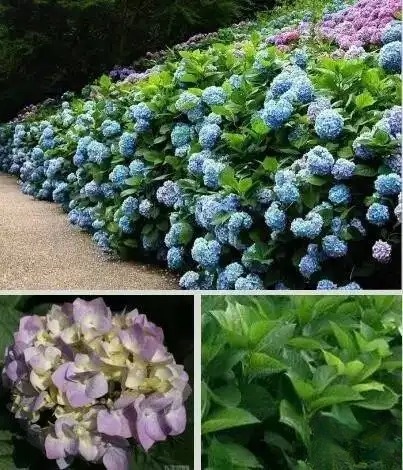
Morphological characteristics
A deciduous shrub with smooth twigs and strong old branches. The leaves of the hydrangea are large and opposite, light green, shiny, oval or obovate, with blunt serrations on the edges. The hydrangea flower balls are large and terminal. The hydrangea is bluish-white at first, gradually turns pink, and then turns purple-red, with beautiful colors. The flowering period of the hydrangea is from June to July, and each cluster of flowers can bloom for two months.
Ecological habits
Hydrangea prefers warm, humid and semi-shady environment. The suitable temperature for growth is 18-28℃, and the temperature in winter should not be lower than 5℃. The cultivation soil should be kept moist, but attention should be paid to drainage in the rainy season to prevent waterlogging and root rot. Usually cultivation should be avoided from the scorching sun, and 60%-70% shade is the most ideal. The flower color is affected by the pH of the soil. The flowers in acidic soil are blue, and the flowers in alkaline soil are red.
Garden Application
Hydrangea has a long flowering period and is an ideal flower and tree suitable for both courtyard cultivation and garden viewing.
26. Calliandra haematocephala Hassk. Mimosa family Calliandra haematocephala
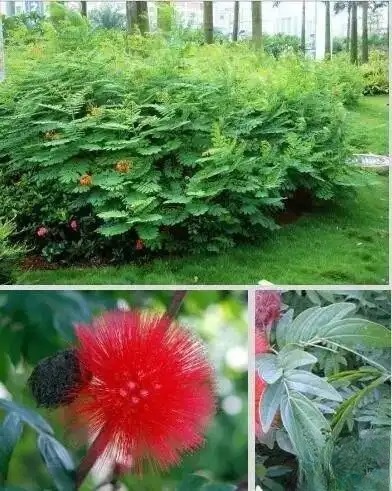
Morphological characteristics
Semi-deciduous shrub, small tree, 1-3 meters high. Bipinnate leaves with 1 pair of pinnae, each pinnae with 7-9 pairs of leaflets; leaflets lanceolate, oblique, 2-4 cm long, slightly larger in the middle and upper parts. Inflorescence axillary, about 3 cm in diameter, containing 20-40 flowers; corolla light purple, 5-8 mm long; stamens 5-6 times longer than corolla, red. Flowering period from spring to autumn. Pods ribbon-shaped. Seeds mature in late autumn and early winter.
Ecological habits
It likes a warm and sunny environment. It requires a deep soil layer. The wintering temperature is 15-18℃. It is usually propagated by cuttings, and the temperature of the cutting bed needs to be 25-28℃. It can be planted in the open field in tropical and subtropical areas, and in potted plants in northern areas.
Garden Application
The branches and leaves are extended, and the inflorescence is in the shape of a red pompom, which is eye-catching and pleasant among the green leaves. It is often pruned into a ball shape, and in early spring, it sprouts light red tender leaves, which are beautiful and lush. It is an excellent woody flower plant. It is suitable for single planting or cluster planting in gardens, and can also be cultivated as a hedge and road divider. It can be potted and grows well in greenhouses in Shanghai.
27. Ligustrum×vicaryi Ligustrum×vicaryi
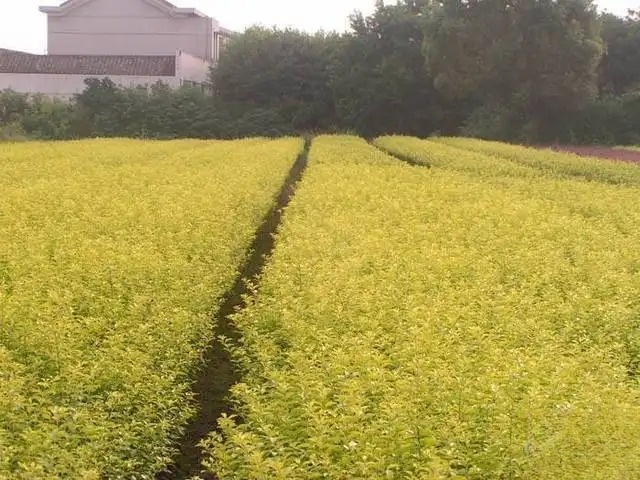
Morphological characteristics
Golden Ligustrum lucidum is 2-3 meters tall, with a crown width of 1.5-2 meters. The leaves are single and opposite, oval or ovate-oval, 2-5 cm long. The drupe is broadly oval, purple-black. The leaves of Golden Ligustrum lucidum are golden yellow, especially in spring and autumn.
Ecological habits
Ligustrum lucidum has strong adaptability and is not strict on soil requirements. It likes light, is slightly shade-tolerant, and has strong cold resistance. It has strong disease resistance and is rarely damaged by diseases and insects.
Garden Application
It has a wide range of uses in landscaping. Its leaves are golden yellow throughout the growing season, which is beautiful and unique. Therefore, it can be planted in groups and patches in the garden configuration. In the "street green decoration" or around the sculpture, planting patches of golden privet, its eye-catching color plays a role of icing on the cake, enriching the landscape color and livening up the garden atmosphere.
28. Ligustrum japonicum'Howardii' Ligustrum japonicum
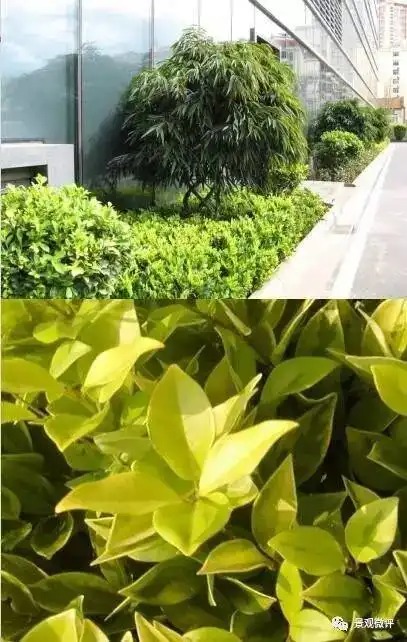
Morphological characteristics
The leaves are leathery, thick and fleshy; the new leaves are bright yellow in spring, turning golden yellow in winter, and some new leaves have cloud-like light green patches on both sides or one side of the midrib, with short internodes and dense branches and leaves. The flowers are white and the fruits are purple.
Ecological habits
Strong heat resistance: high temperature above 35℃ will not affect its ecological characteristics and ornamental characteristics; strong cold resistance: can withstand low temperature of -9.7℃; long golden leaf period: golden leaves dominate in spring, autumn and winter. Only when the temperature continues to rise in summer will some leaves turn green.
Garden Application
Ligustrum lucidum grows vigorously and has strong germination ability; it is a very good natural hedge material. It can be used as a garden perimeter hedge to define space and block sightlines. It can also be planted in semi-shaded places such as walls and forest edges to block building foundations and enrich the layers of forest edge landscape. The color of Ligustrum lucidum leaves is a golden yellow with high brightness. When paired with Photinia fraseri, it can create a very unexpected effect. It is praised by the industry as the "golden partner of Photinia fraseri".
29. Alpinia sanderae Hort
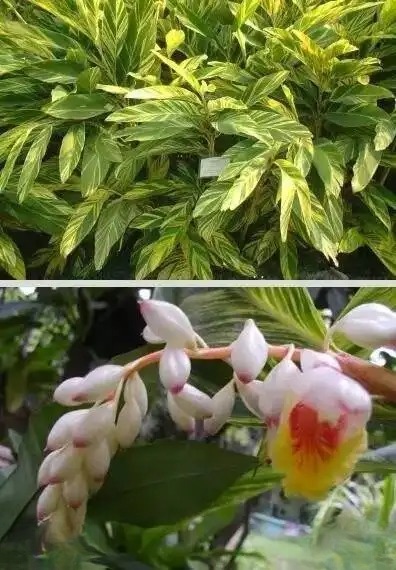
Morphological characteristics
An evergreen herbaceous foliage plant. 1-2 meters tall. Its rhizomes grow horizontally and are fleshy. Its leaves are leathery, with short petioles and short circular lanceolate. The leaves are dark green with golden vertical stripes and patches, and are shiny. The panicles are drooping, with white bracts and yellow edges. The flowers are nearly bell-shaped and the corolla is white. The flowering period is summer.
Ecological habits
It likes high temperature and high humidity environment, and bright light. But it can also tolerate partial shade. The suitable temperature for growth is 15-30℃, and the wintering temperature is about 5℃. It grows better in pine and well-drained fertile loam.
Garden Application
It is often used beside landscape rocks, on the edge of green land and in the corner of the courtyard, and has a very good ornamental effect. It can also be used as a decorative plant in indoor gardens.
30. Cordylie fruticosa (L.) A. Cheval.) Agavaceae
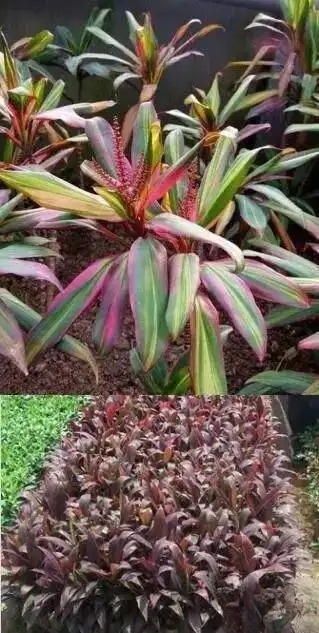
Morphological characteristics
Shrub-like, with leaves clustered at the top of stems or branches, rectangular to rectangular-lanceolate, green or purple-red; flowers are light red, purple to yellow, with slender styles. Flowering period is from November to March of the following year.
Ecological habits
It likes high temperature and high humidity, the critical low temperature in winter is 10℃, and it requires semi-shade in summer. Avoid alkaline soil.
Garden Application
Cordyline is a tall plant, usually used as a background layer shrub. It has beautiful leaves and gorgeous and elegant colors, and is often used as a colorful shrub to enrich the color of the garden.
31. Chunjuan Rhododendronsimsii & R.spp. Ericaceae Rhododendron

Morphological characteristics
Deciduous shrub, about 2 meters high; branches, bracts, pedicels and flowers are all covered with brown flat rough hairs. Leaves are papery, ovate-elliptical, 2-6 cm long, 1-3 cm wide, pointed at the top, cuneate at the base, with rough hairs on both sides, denser on the back.
Ecological habits
Spring azalea likes acidic soil, needs to be protected from the sun and shade in summer, and should be kept warm and cold in winter. It is suitable for growing under scattered light with low light intensity. If the light is too strong, the tender leaves are easily burned, and the new and old leaves are burnt, which may lead to the death of the plant in severe cases.
Garden Application
Spring azalea has luxuriant flowers and leaves, beautiful and varied, strong germination, resistant to pruning, and unique root stumps, making it an excellent bonsai material. It is best planted in clusters or patches at the edge of a forest, by a stream, by a pool, or by a rock in a garden, or it can be planted scattered under a sparse forest. Spring azalea is also a good material for flower hedges, and can be cultivated into various shapes through pruning. The Spring Azalea Specialty Garden is very unique.
32. Monstera deliciosa
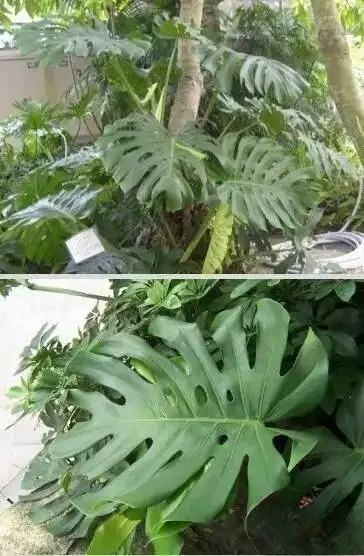
Morphological characteristics
Monstera is a semi-climbing plant with thick stems and many bamboo-like nodes, hence the name Monstera. The stems have long, drooping brown aerial roots that can cling to other objects and grow upward. The leaves are thick, leathery, alternate, dark green or green. The young leaves are heart-shaped and have no perforations. When they grow up, the leaves are rectangular and have irregular pinnate-shaped deep fissures, with holes from the leaf margin to the veins, like a tortoise shell pattern.
Ecological habits
Monstera often grows on tall trees in tropical rain forests. It likes a warm and humid environment and avoids strong sunlight and dryness. The optimum temperature for growth is 20-25℃. The night temperature in winter should not be lower than 10℃ during the seedling stage. Mature plants can withstand 5℃ for a short time. Frost damage is likely to occur if the temperature is lower than 5℃.
Garden Application
Monstera has a beautiful plant shape, peculiar leaf shape, dark green and shiny leaf color, and the whole plant has a good ornamental effect. It is very natural and generous to plant it in the gaps between stones beside the pond and the stream.
33. Syringa yunnanensis Franch. Oleaceae Syringa

Morphological characteristics
Deciduous shrub. Plant height 2~4m; twigs slender, slightly quadrangular, glabrous; buds small, ovate or oval, covered with short hairs. Leaves ovate to elliptic-ovate, rhombus-ovate, 3~8cm long, short-acuminate at the tip, broadly cuneate at the base, with fine hairs on the edges.
Ecological habits
Positive, drought-tolerant, cold-tolerant, barren-tolerant, purple or lavender flowers with strong fragrance, flowering period is May
Garden Application
It can be used for viewing in the courtyard or planted in clusters. It has a fragrance and can be cultivated for viewing.
34. Yucca filamentosa L. Agavaceae Yucca
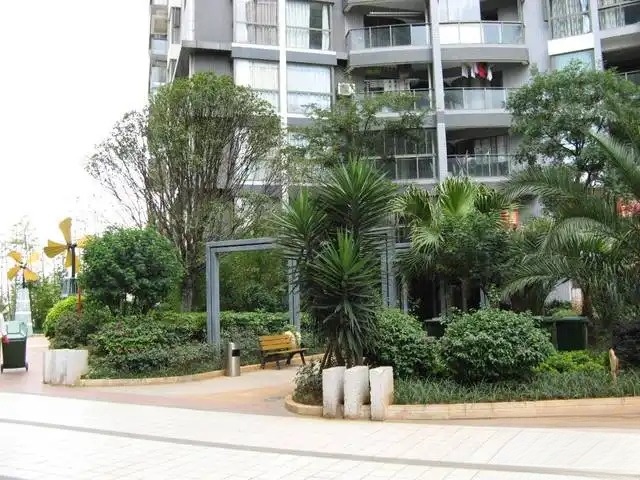
Morphological characteristics and garden uses
An evergreen shrub with short stems and leaves clustered at the base in spiral arrangement. The leaves are hard and thick, 50-80 cm long and 4-7 cm wide, with hard spikes at the top, wrinkled on the surface, dark green with a small amount of white powder, straight and oblique, with smooth leaf margins, and old leaves with a few filaments. Flowers bloom in summer and autumn.
Ecological habits
Yucca is a tropical plant, strong and easy to survive, with strong adaptability to soil, and can grow well in any soil. It likes a sunny and well-ventilated environment and is extremely cold-resistant.
35. Euonymus japonicus Thunb, Buxaceae, Euonymus japonicus
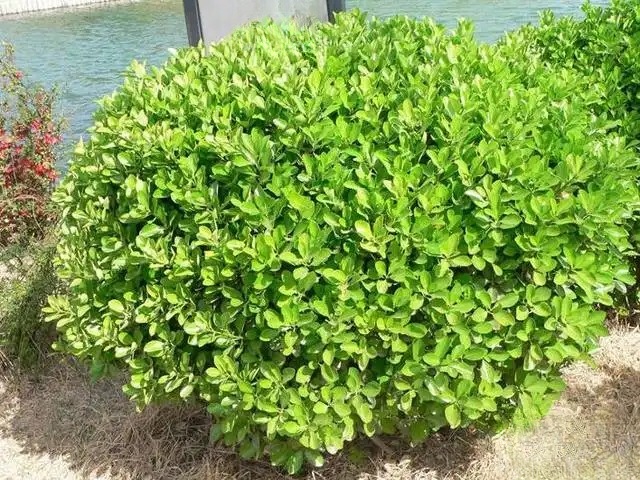
Morphological characteristics
The genus Euonymus is an evergreen shrub or small tree with slightly quadrangular twigs, densely growing branches and leaves, and a spherical crown. The leaves are opposite, obovate or elliptical, with blunt teeth on the edges, and dark green and shiny on the surface. The cymes are axillary, with long stalks, and the flowers are green and white. The capsule is spherical, light red, and the aril is orange-red.
Ecological habits
The large-leaf boxwood is a temperate and subtropical tree species, native to central and northern provinces, widely cultivated, and also distributed in Japan. It likes light and is relatively shade-tolerant. It likes warm and humid climates and is relatively cold-tolerant. It requires fertile and loose soil and is extremely resistant to pruning and shaping.
Garden use
This species has dense branches and leaves, is evergreen all year round, has bright green leaves, and has many flower branches and variegated leaves. It is a beautiful foliage tree. It is often used as a hedge and background planting material in gardens, and can also be planted in clusters on the edge of the lawn or on both sides of the garden path; if it is modified and shaped, it is more suitable for planned symmetrical planting.
36. Pistacia weinmannifolia, Anacardiaceae
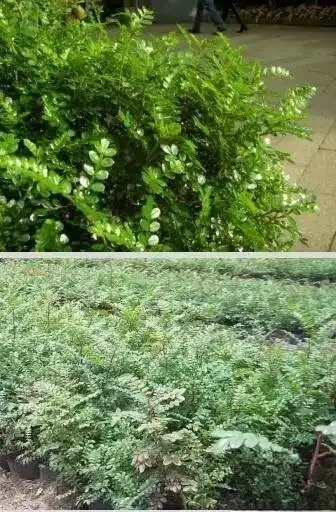
Morphological characteristics
An evergreen shrub or small tree with even-pinnate compound leaves that have a fresh fragrance and young red leaves. The fruiting period is from August to October and the fruit is red.
Ecological habits
The fragrant wood is a positive tree, but is also slightly shade-tolerant. It likes warmth, requires a deep soil layer, strong germination ability, slow growth and a long life. This tree species is resistant to drought and barrenness, has a well-developed root system and strong resistance. It is a pioneer tree species for afforestation and greening in dry and hot river valleys. It likes soil with sufficient sunlight and not prone to waterlogging.
Garden use
After transplanting, the leaves of the fragrant wood will fall off. This is a normal reaction, so don't worry too much. Don't water the fragrant wood too often. Once every 3-5 days is appropriate. Each time you water it, make sure it is thoroughly watered, that is, the water must be wet at the bottom. Too much watering will cause root rot. The soil must be permeable. The fragrant wood cannot withstand strong winds, and its leaves will fall off if the wind is strong.
37. Rhapis excelsa (Thunb.) Henry ex Rehd.
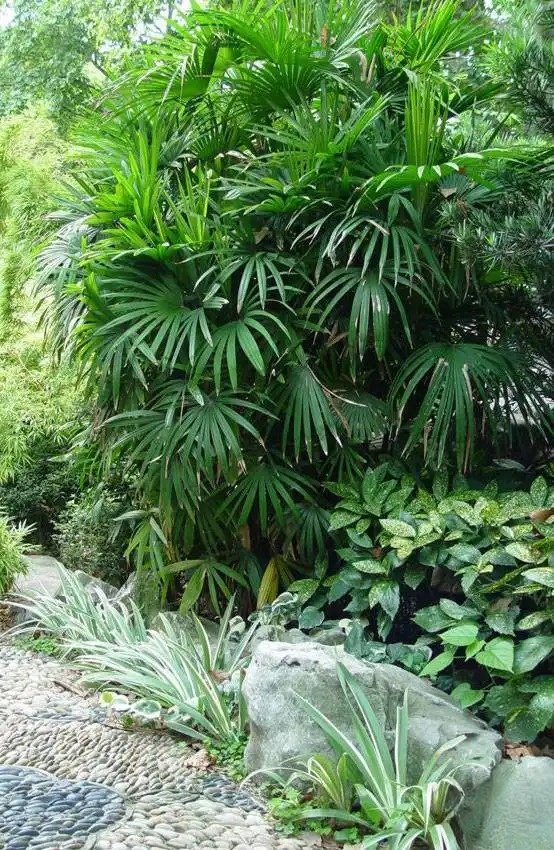
Morphological characteristics
The bamboo is a shrub with an upright stem, 1-3 meters high. The stem is as slender as a finger, unbranched, with leaf nodes, and covered with a leaf sheath with brown reticular fibers. The leaves are clustered at the top of the stem, palm-shaped, deeply cracked almost to the base, with 3-12 lobes, 20-25 cm long and 1-2 cm wide; the petiole is slender, about 8-20 cm.
Ecological habits
It often grows in the shaded and moist bushes on hillsides and beside ditches. There are large-leaf, medium-leaf and fine-leaf bamboos cultivated, as well as variegated bamboos. It likes warm, humid, semi-shaded and well-ventilated environments, is afraid of the scorching sun, is slightly cold-resistant and can withstand temperatures around 0°C.
Garden use
The bamboo palm has a compact and beautiful plant shape, upright clusters, elegant leaves, and dark green and shiny leaves. It has both the charm of tropical phoenixes and the elegance of bamboo. It is very shade-tolerant and suitable for small and medium-sized potted plants for general family indoor decoration and viewing, and can also be planted in large pots for indoor decoration in large buildings. It is one of the large indoor foliage plants. It can be appreciated for a long time in a bright room, and can be continuously appreciated for 3-4 weeks in a darker room.
38. Abelia dielsii
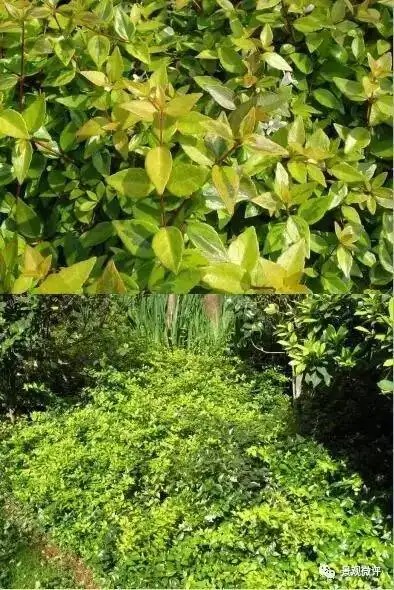
Morphological characteristics
Woody plant, deciduous shrub, less than 2 meters in height, pink flowers, blooming continuously from July to September, young branches with reddish brown. Covered with inverted bristles. Leaves opposite or in whorls of 3, oblong or oblong-lanceolate, entire or sparsely coarsely toothed, ciliate. Double flowers in the axils of branches, without peduncle. Calyx tube covered with short prickles. Lobes 4. Corolla white to light red, lobes 4. Fruit slightly curved, sparsely covered with prickles. Flowering in May, fruiting in August-September.
Ecological habits
It tolerates partial shade, cold and drought, grows fast, tolerates pruning, likes warm and humid climates, and tolerates drought and barrenness. It has a well-developed root system and strong germination and tillering abilities. It can grow in open areas, stream banks, sparse forests or rock cracks.
Garden use
Cluster planting, flower hedge, Akebia chinensis has drooping branches and leaves, a graceful tree posture, beautiful flowers, and unique calyx lobes. It can be planted in clusters beside the grass, beside the building, or in rows beside the road as a flower hedge.
39. Var.variegata D'Ombr.
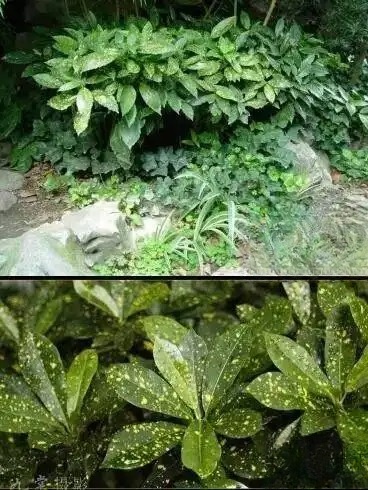
Morphological characteristics
An evergreen shrub, up to 3m tall. Growing in clusters, with a spherical crown. The bark is initially green and smooth, then turns gray-green. The leaves are opposite, leathery, rectangular, with sparsely coarse teeth on the margins, glossy green on both sides, and covered with yellow spots, resembling sprinkled gold.
Ecological habits
It has strong adaptability. It likes warm, humid environment and is not very cold-resistant. It thrives in loose, fertile, slightly acidic soil or neutral loam under the forest. If it is exposed to direct sunlight without shade, it will grow slowly and develop poorly. It is resistant to pruning and has very few diseases and insect pests. It is also very resistant to smoke damage.
Garden use
It is a precious shade-tolerant shrub with luxuriant branches and leaves that never withers in winter. It is suitable to be planted under trees on both sides of the gate, in the corners of courtyard walls, by the pool or lake, under the forest by the stream, and in any shady and wet place. It is also very harmonious and appropriate to plant it on a rockery as a foil for flowering shrubs, or as a base tree species at the edge of a forest.
40. Canna generalis Bai1ey, Cannaceae
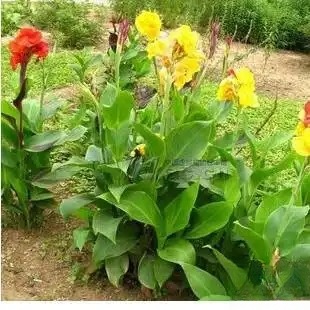
Morphological characteristics
The plant is 1 to 1.5 meters tall and covered with white frost. The leaves are large, alternate, oblong, and have sheath-like petioles. The flowering period is from June to October. In addition to being divided into different varieties according to the color of the flowers, the leaf color of the large-flowered canna can be pink green, bright green or bronze, and there are also varieties with red and green mosaics or yellow and green mosaics. There are also dwarf varieties with a plant height of only 50 to 60 cm. The tall variety of banana lotus can reach a plant height of 2 to 3 meters.
Ecological habits
It likes hot and sunny weather. Fertile loam is the best choice. It tolerates moisture but avoids waterlogging. It is afraid of strong winds.
Garden use
Canna indica has emerald green leaves and bright flowers, with colors such as milky white, light yellow, orange, pink, red, purple and gold. It is suitable for flower border background or planting in the center of flower beds. It can also be planted in clusters or strips at the edge of forests and grasslands. Dwarf varieties can be potted or used as ground cover plants on sunny slopes.
END...
———————————————
【Spanish A1】Quick Spanish Course Volume 1 Self-study Course